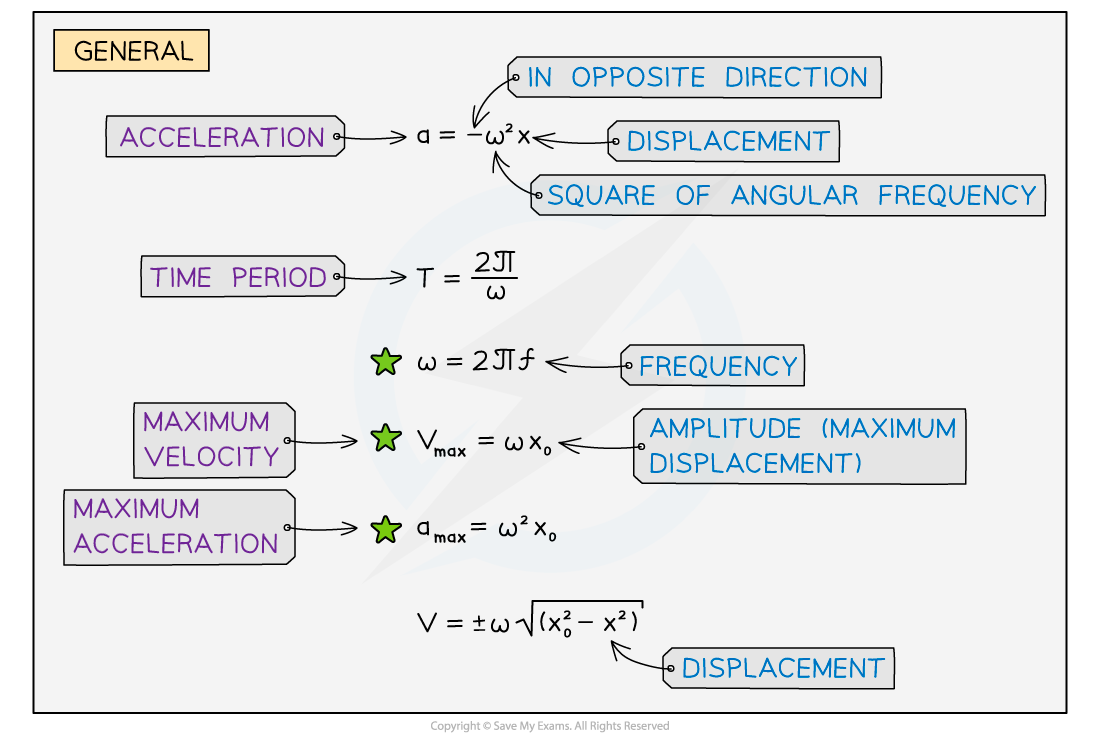Velocity (OCR A Level Physics): Revision Note
Exam code: H556
Velocity of an Oscillator
The velocity of an object in simple harmonic motion varies as it oscillates back and forth
Since velocity is a vector, the velocity of the oscillator is its speed in a certain direction
The maximum velocity of an oscillator is at the equilibrium position i.e. when its displacement is zero
The velocity of an oscillator in SHM is defined by:
Where:
= velocity (m s-1)
= maximum velocity (m s-1)
= angular frequency (rad s-1)
= time (s)
This is a cosine function if the object starts oscillating from the equilibrium position (
when
)
The velocity
of an oscillator is related to its displacement
by:
Where:
= displacement (m)
= amplitude (m)
± = ‘plus or minus’. The value can be negative or positive
This equation shows that
The greater the amplitude
of an oscillation, the greater its velocity
when passing through the equilibrium position (at
)
The maximum velocity
of an oscillator is therefore given by:

The variation of the speed of a mass on a spring in SHM over one complete cycle
Worked Example
A simple pendulum oscillates with simple harmonic motion with an amplitude of 15 cm. The frequency of the oscillations is 6.7 Hz.
Calculate the speed of the pendulum at a position of 12 cm from the equilibrium position.
Answer:
Step 1: Write out the known quantities
Amplitude of oscillations,
= 15 cm = 0.15 m
Displacement at which the speed is to be found,
= 12 cm = 0.12 m
Frequency,
= 6.7 Hz
Step 2: Oscillator speed with displacement equation
Since the speed is being calculated, the ± sign can be removed, as direction does not matter in this case
Step 3: Write an expression for the angular frequency
Equation relating angular frequency and normal frequency:
Step 4: Substitute in values and calculate
Examiner Tips and Tricks
You often have to convert between time period T, frequency f and angular frequency ⍵ for many exam questions – so make sure you revise the equations relating to these:


You've read 0 of your 5 free revision notes this week
Unlock more, it's free!
Did this page help you?